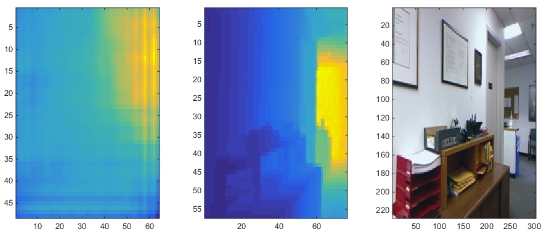Supervision: Christian Rupprecht
Student: Iro Laina
In recent years, Convolutional Neural Networks (CNNs) have been proven to outperform state-of-the-art approaches in several Computer Vision applications. In this master’s thesis, we focus on the problem of high dimensional regression. One example is depth estimation from a single image. Starting from a state-of-the-art multi-scale CNN architecture, depth predictions are performed on the NYU Depth dataset in two stages; an original coarse prediction, using fully-connected layers to include global information, and a second stage which enhances the prediction with details at a finer (local) scale. Challenges include scale ambiguity, high dimensionality and the continuous nature of the output. The final aim of this work is the implementation of a general-purpose high-dimensional regression network, applicable to a set of tasks, such as (the inverse problem) predicting an RGB image from depth, predicting color from grayscale, next frame prediction in a video sequence and potentially medical applications.
